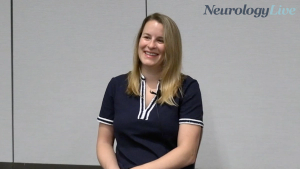|Videos|March 8, 2021
Treating Narcolepsy and Excessive Daytime Sleepiness
Phyllis Zee, MD, PhD, and Alon Avidan, MD, MPH, provide an overview of behavioral and pharmacological approaches to the management of excessive daytime sleepiness (EDS) and narcolepsy and discuss the recent approval of agents with new mechanisms of action.
Advertisement
Newsletter
Keep your finger on the pulse of neurology—subscribe to NeurologyLive for expert interviews, new data, and breakthrough treatment updates.
Advertisement
Related Articles
 Current Challenges and New Opportunities Ahead for Women in Neurology
Current Challenges and New Opportunities Ahead for Women in NeurologySeptember 15th 2025
Latest CME
Advertisement
Advertisement
Trending on NeurologyLive - Clinical Neurology News and Neurology Expert Insights
1
Stem Cells of Secondary Progressive Multiple Sclerosis Drive Increased Proinflammatory T-Cell Activity
2
Daridorexant Provides Relief for Insomnia in Women During Menopausal Transition
3
RELIEV-CM Pilot Study Data Further Supports ShiraTronics’ Neuromodulation Device to Treat Chronic Migraine
4
Optimizing Speech and Movement Therapy to Improve Motor and Nonmotor Symptoms of Parkinson Disease: Cynthia Fox, PhD, CCC-SLP
5












































